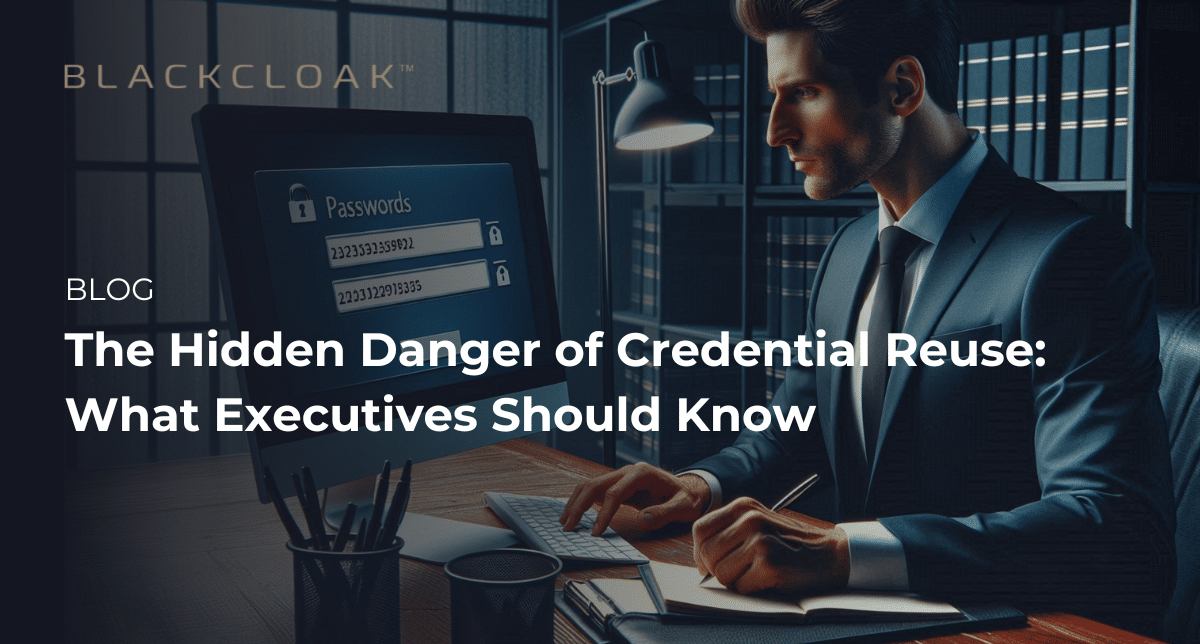The Hidden Danger of Credential Reuse: What Executives Should Know

The security of personal and corporate data has become an important concern for executives across industries. One of the most pervasive, yet overlooked, threats to this security is credential reuse.
Credential reuse occurs when an individual uses the same username and password across multiple platforms and services. While it might seem convenient for memory’s sake, the practice significantly amplifies the risk of a security breach.
The danger of credential reuse lies in its domino effect. When cybercriminals successfully obtain login information from one account, they are likely to attempt accessing other accounts with the same credentials. Considering that high-profile executives often have access to sensitive corporate information, a breach in their personal accounts could potentially compromise entire organizations.
The Importance of Credential Stuffing Prevention
Credential reuse does not merely increase the risk of unauthorized access to multiple accounts; it also magnifies the consequences of a single account breach.
Cybercriminals can use the acquired data for various malicious purposes, including identity theft, financial fraud, and launching sophisticated phishing attacks against the executive’s contacts or their organizations.
Executives: Common Targets of Credential Stuffing Attacks
Executives are particularly vulnerable to credential stuffing attacks, where attackers use automated tools to test stolen usernames and passwords across various websites. The success rate of these attacks is significantly higher with reused credentials, making executives prime targets for cybercriminals.
How to Prevent Credential Stuffing
To mitigate the risks associated with credential reuse, executives can adopt several strategies:
- Use Unique Passwords for Each Account: The foundation of digital security is the use of strong, unique passwords for each online account. Executives should prioritize creating complex passwords that combine letters, numbers, and special characters, avoiding any personal information that could be easily guessed or found online.
- Leverage Password Managers: Remembering a unique password for each account can be daunting. Password managers, such as 1Password, are invaluable tools that securely store and manage all your passwords. They can also generate strong passwords and automatically fill them in when logging into accounts, simplifying the process of maintaining password hygiene.
- Enable Multi-Factor Authentication (MFA): MFA adds an extra layer of security by requiring a second form of verification beyond just the password. This could be a text message, a phone call, a biometric scan, or a prompt through an authentication app. Enabling MFA wherever possible significantly reduces the risk of unauthorized access, even if a password is compromised.
- Regularly Monitor Accounts for Suspicious Activity: Executives should regularly review their accounts for any unusual activity. This includes checking for unauthorized logins, unfamiliar transactions, or changes to account information. Early detection of these signs can help prevent further damage. Concierge cybersecurity services can help this process with real-time personal cybersecurity incident response.
- Educate and Encourage Secure Practices in Your Organization: Finally, as leaders within their organizations, executives have the responsibility to promote a culture of cybersecurity. This involves educating employees about the dangers of credential reuse and encouraging the adoption of secure practices, such as the use of password managers and MFA.
While the convenience of reusing credentials across multiple platforms is tempting, the risks far outweigh the benefits. By understanding the hidden dangers of credential reuse and implementing the tips outlined above, executives can significantly enhance their digital security posture. Protecting oneself and one’s organization begins with recognizing the critical importance of strong, unique passwords and the effective management of digital credentials.
BlackCloak’s digital executive protection experts can help. Set up time for a demo with our concierge personal cybersecurity team by clicking here.









